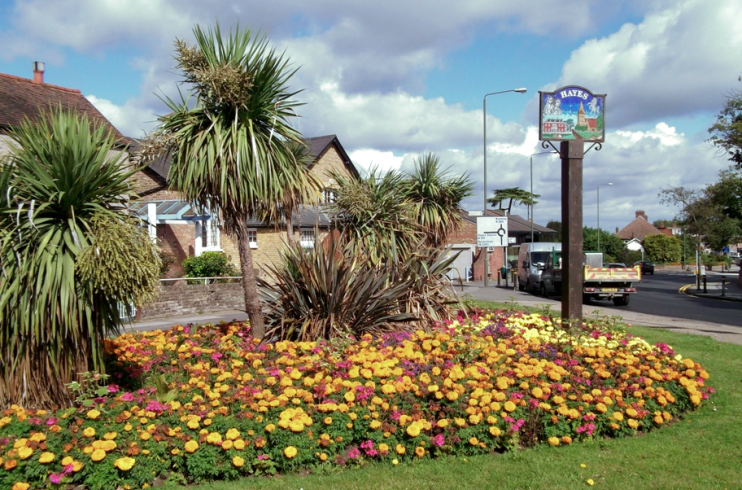Hayes, Bromley
Hayes, Bromley
An elongated suburb extending almost a mile-and-a-half southwards from Bromley

First mentioned in 1177, the name probably meant ‘rough ground covered with brushwood’. Hayes Place was in existence by the 15th century and was rebuilt in the 1750s. By the time the railway arrived in 1882, Hayes was a flourishing village of around 600, but prospective commuters were deterred until the line was electrified in 1925, almost halving the journey time to Charing Cross.
Ribbon development had already begun to creep along Hayes Road from Bromley when the banker Eric Hambro sold Hayes Place. Sheffield builder Henry Boot demolished the house in 1933 and laid out the Hayes Place estate. Several local firms put up more estates, including Hayes Hill, Pickhurst Manor, and Hayes Gardens.
To cope with the increase in commuter traffic the station was rebuilt in 1935, and Station Approach became the main shopping area. After the Second World War two major developments filled in the land between Bromley and Hayes. Bromley council laid out its own Hayes Place estate in the 1950s, with local shops on Chilham Way.
Further north, the Building Design Partnership completed Hayesford Park in 1965, on the site of Hayes Food Farm. Influenced by the garden city movement, Hayesford Park mixes detached houses, bungalows, terraced houses and long blocks of flats, arranged round central shops that have since suffered from their proximity to Bromley.
Hayes is blessed with two broad open spaces. On the south side, Hayes Common is one of the largest areas of unimproved acidic grassland in London, dotted with impressive older houses. To the north-east, Norman Park has extensive sporting facilities, including Bromley football club’s ground and the home track of Blackheath and Bromley Harriers athletics club.
Like much of the borough, Hayes is comfortable – but not fabulously wealthy – suburbia. Almost 60 per cent of adult residents are married, 90 per cent are owner-occupiers, and 92 per cent are white.
From 1754 until 1785, Hayes Place was a country seat of the Pitt family, leading figures of British imperial statesmanship. William Pitt the Younger, prime minister 1783–1801 and 1804–6, was born at the house in 1759. His father, William Pitt the Elder, the first Earl of Chatham and prime minister 1766–8, died here in 1778.
